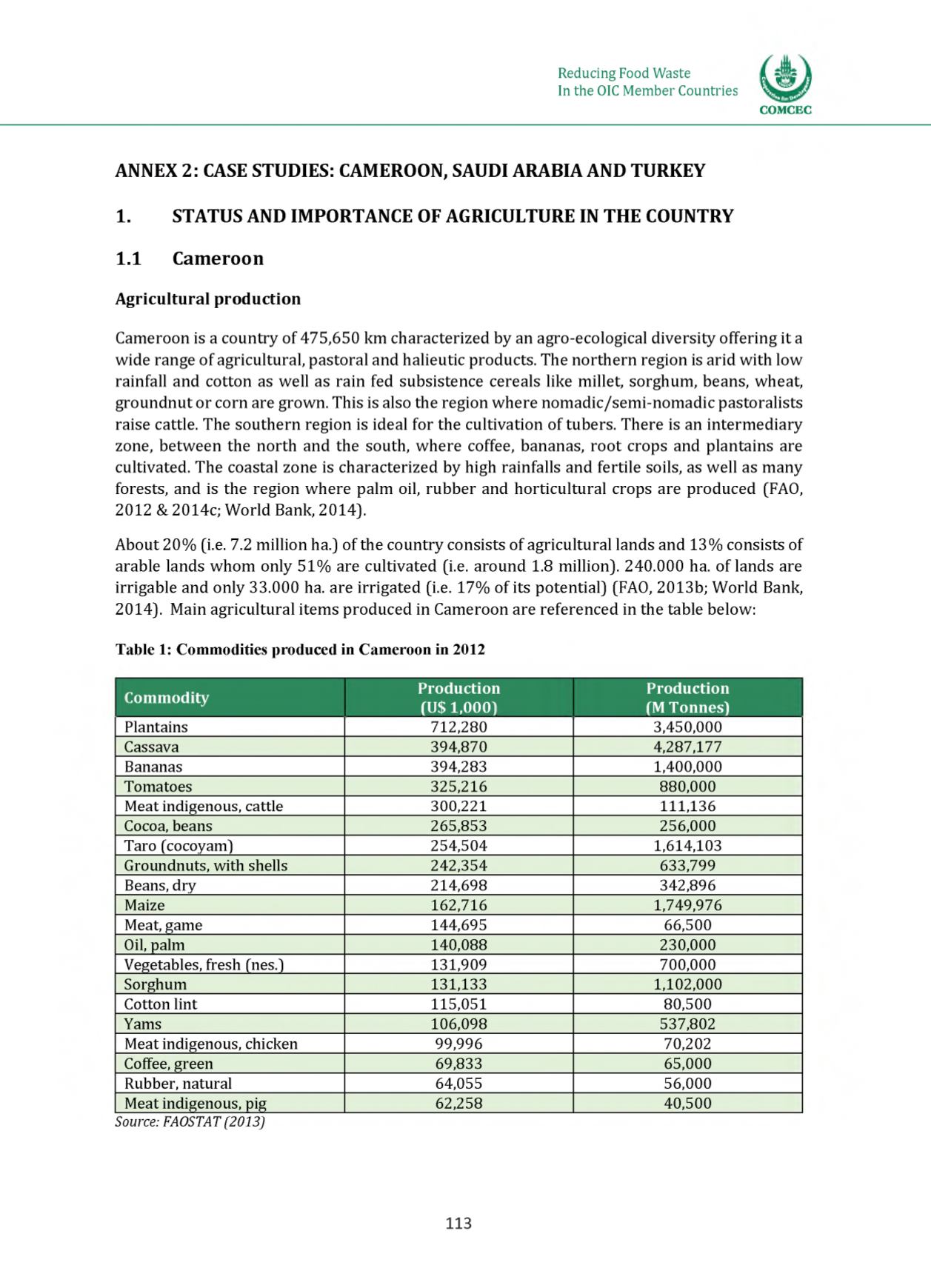

COMCEC
Reducing Food Waste
In the OIC Member Countries
ANNEX 2: CASE STUDIES: CAMEROON , SAUD I ARAB IA AND TURKEY
1.
STATUS AND IMPORTANCE OF AGR ICULTURE IN THE COUNTRY
1.1 C am e ro o n
Agricultural production
Cameroon is a country of 475,650 km characterized by an agro-ecological diversity offering it a
wide range of agricultural, pastoral and halieutic products. The northern region is arid with low
rainfall and cotton as well as rain fed subsistence cereals like millet, sorghum, beans, wheat,
groundnut or corn are grown. This is also the region where nomadic/semi-nomadic pastoralists
raise cattle. The southern region is ideal for the cultivation of tubers. There is an intermediary
zone, between the north and the south, where coffee, bananas, root crops and plantains are
cultivated. The coastal zone is characterized by high rainfalls and fertile soils, as well as many
forests, and is the region where palm oil, rubber and horticultural crops are produced (FAO,
2012 & 2014c; World Bank, 2014).
About 20% (i.e. 7.2 million ha.) of the country consists of agricultural lands and 13% consists of
arable lands whom only 51% are cultivated (i.e. around 1.8 million). 240.000 ha. of lands are
irrigable and only 33.000 ha. are irrigated (i.e. 17% of its potential) (FAO, 2013b; World Bank,
2014). Main agricultural items produced in Cameroon are referenced in the table below:
Table 1: Commodities produced in Cameroon in 2012
Production
Production
Commodity
(U$ 1,000)
(M Tonnes)
Plantains
712,280
3,450,000
Cassava
394,870
4,287,177
Bananas
394,283
1,400,000
Tomatoes
325,216
880,000
Meat indigenous, cattle
300,221
111,136
Cocoa, beans
265,853
256,000
Taro (cocoyam)
254,504
1,614,103
Groundnuts, with shells
242,354
633,799
Beans, dry
214,698
342,896
Maize
162,716
1,749,976
Meat, game
144,695
66,500
Oil, palm
140,088
230,000
Vegetables, fresh (nes.)
131,909
700,000
Sorghum
131,133
1,102,000
Cotton lint
115,051
80,500
Yams
106,098
537,802
Meat indigenous, chicken
99,996
70,202
Coffee, green
69,833
65,000
Rubber, natural
64,055
56,000
Meat indigenous, pig
62,258
40,500
Source: FAOSTAT(2013)
113
















